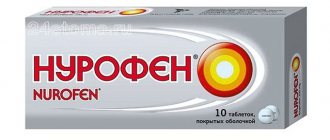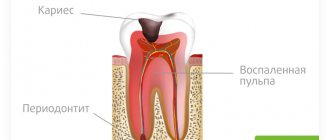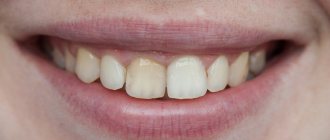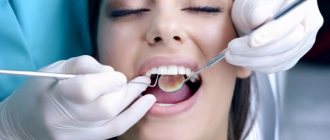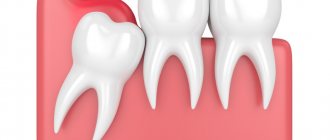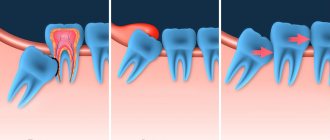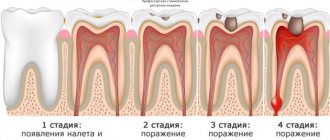In modern dentistry, implantology is considered the most effective method of restoring teeth. With high-quality surgery, the patient not only corrects dental defects, but also receives an aesthetically attractive and functional smile. But even with the use of the best implants, a highly qualified dentist and the absence of contraindications, pain after direct implantation is always present. But don’t worry, pain is a normal reaction of your body to surgery. And dental implantation is no exception, even with minimal intervention, installing an implant in the hole, your body gives a signal about the presence of a new object in your body. Usually, immediately after surgery you do not experience pain due to the effect of anesthesia and painkillers. On average, sutures are removed 10 days after surgery and this is the deadline at which you should experience pain. If you have complaints after 12 days, or vice versa, sharp, stabbing pain appears, you should immediately contact the dentist who performed the operation and tell about it.
Causes of pain
Pain after the anesthesia wears off is most often due to the following reasons:
- The operation itself for implantation of teeth, fusion of soft tissues and the presence of an implant in the socket;
- Due to additional interventions during surgery, in case of a non-standard clinical case;
- Excessive damage to soft tissue due to inexperience of the doctor;
- Through the fault of the patient himself, who may not have followed the dentist’s recommendations.
It is worth paying attention to the fact that each body is individual and pain can be caused by a reaction to a drug or anesthesia. Also, it all depends on the chosen method and the complexity of the operation. For example, with a one-stage implantation, minimal damage is caused to the body, the gums are not cut and the bone tissue of the jaw is practically not affected, in which case the patient will experience minimal discomfort. But it is important to understand that this method is not suitable for everyone and you need to be prepared for the fact that you may have a number of deviations from the norm, which will require additional interventions.
The process of installing a crown on an implant
The orthopedic system consists of three important elements: the crown, the abutment and the implant. Prosthetics looks like this:
- Introduction of anesthesia. To ensure that the patient does not experience pain, local anesthesia is administered, taking into account individual characteristics and possible allergic reactions.
- Mounting the abutment. At this stage, a titanium rod or a zirconium dioxide abutment is fixed.
- Formation of the impression. In the dental laboratory, an impression is created based on the data obtained. Based on the clinical situation, an orthopedic product can be installed either immediately or after several months. You can learn about how implant crowns are made from the specialists of our clinic.
- Installation of a dental crown. The orthopedic dentist fixes the finished version in the oral cavity.
The crown is fixed to the implant using both cement and screw methods. In the first case, fixation is carried out using a special cement mortar based on composite glue. Screw or transocclusal means installation using a screw. It is considered more reliable; if necessary, you can always remove the crown and unscrew the screw. Each method has its own mandatory indications, pros and cons.
The artificial tooth is fixed at various times after surgical implantation, it all depends on the clinical picture and technique. The timing of prosthetics and installation of crowns on implants on chewing teeth is planned by the doctor. Much depends on the condition of the bone tissue and the somatic condition of the patient. Late loading is considered the safest, when prosthetics take from 2 to 4 months.
How to relieve pain at home
It is very important to note that self-medication very often leads to negative consequences. These tips are aimed at reducing pain after implantation at home. But you can no longer endure severe pain - immediately seek qualified help.
- Apply a cold compress to the source of pain, blood circulation will slow down and thereby the pain will subside;
- The attending physician will prescribe painkillers for you, take them according to the instructions;
- A day after the operation, begin to rinse the oral cavity with special solutions with soda, in order to avoid the onset of inflammatory processes;
- The dentist will prescribe a diet for you for the next week, follow the recommendations;
- Minimize physical activity; due to active blood circulation, the wound may open and throbbing pain may begin;
- Get more rest;
- In the first few weeks, it is very important to maintain regular oral hygiene.
How to reduce pain during recovery?
- Take a pain reliever before the anesthesia wears off.
- Follow the schedule of taking anti-inflammatory and antimicrobial medications prescribed by your implantologist.
- From the second day, rinse your mouth with saline and soda solutions, and antiseptic pharmaceuticals.
- Strictly follow the diet prescribed by your doctor.
- Apply ice to your cheek for the first few days after surgery.
- Avoid physical activity, get plenty of rest, and take proper care of your oral cavity.
You will find more recommendations in our article: “How to care for a dental implant.”
When do you need to see a doctor urgently?
If you notice one or more of the symptoms described above, contact your dentist immediately.
- Constant, incessant bleeding;
- High temperature after 3 days.
- Throbbing pain that is not relieved by painkillers.
- Severe swelling.
- Any pain that occurs 10 days after surgery;
- Sharp pain during and after osseointegration of the pin.
Important: Complications often arise due to errors during implant installation. To avoid this, choose an implantologist wisely and have your dental implants performed in a dental clinic with a reputation that provides a lifetime guarantee on treatment.
When do you need to see a doctor urgently?
There is a list of symptoms for which you should immediately consult a dentist. The most obvious of them:
- Continuous bleeding most likely indicates poor-quality sutures or that they have come apart;
- An elevated temperature lasts for several days - this is a clear sign of the onset of inflammatory processes in the gums or implant rejection;
- Painful sensations that you cannot get rid of with prescribed painkillers and improvised means;
- Severe swelling;
- Sharp or aching pain 12 days after surgery and removal of sutures.
The two most common reasons for gum pain after implant placement are an error during surgery or failure to follow proper care instructions. If we talk about the second, then everything depends only on you and your discipline. You personally cannot influence the dentist’s qualifications. That is why you should be very careful when choosing a clinic and a specialist. And it is important to understand that expensive is not always good. There are many cases where patients suffered serious harm to the body after undergoing surgery in elite clinics.
Pain during recovery
After the anesthesia wears off, the patient may feel some discomfort and aching pain in the jaw, throat, head, and temporal region.
The recovery period, and therefore the duration of pain, is different for all patients and depends on the following factors:
- Number and type of implants implanted (single pin, All-on-4 system, long zygomatic implants);
- Difficulties of the operation (simultaneously with the installation of implants, bone grafting and sinus lifting of the upper jaw can be performed);
- Individual characteristics of the patient and pain threshold.
Important!
If we talk about pain after implantation, it is considered normal if it lasts no more than 10 days after surgery and its intensity weakens every day.
1-5 days after surgery
The pain may increase in the first few days after surgery. There is swelling and the surgical wound bleeds a little. On days 2-3, the operated area may appear blue; some patients complain of headaches, sore throat, and facial muscle tension.
All these phenomena are absolutely normal and indicate the recovery of the body after surgery. Usually by day 5 the patient feels much better.
5-10 days after surgery
During this period, the gums may still ache and there may be discomfort in the area of the zygomatic muscles, but by 10-12 days all these symptoms disappear completely.
| Attention: If 10-14 days after installation of the implant the pain does not go away or intensifies, swelling and fever appear, consult a doctor immediately. An infection may have set in and treatment is needed. |
A few months after implant placement
Some patients have a normal recovery period, but suddenly experience severe pain a few months after implantation.
This may happen for the following reasons:
- Loosening of the temporary crown plug or abutment. During the healing period, the patient can have a plug installed or, in case of one-stage implantation, a plastic crown on a temporary abutment. These structures can sometimes become loose, causing injury to the gums and causing discomfort and pain. This situation is not dangerous, but it is important to contact an implantologist on the same or the next day. The doctor will carefully remove the loose structure, wash it and put it in place.
- Rejection of the implant by the body. The process of osseointegration of the pin continues for several months, during which there is also a slight risk of rejection of the structure. This happens very rarely - in 1% of cases and requires removal of the artificial root.
Other causes of delayed pain include:
- Inflammatory process in the gums.
- Damage to the maxillary sinus or mandibular nerve due to bone resorption in the implant area.
How to care for your gums after implantation?
To begin with, it is worth noting the fact that depending on the clinical case, the characteristics of the body and how the operation went, your attending physician will give you a number of recommendations for caring for the oral cavity, which must be strictly followed. But there are a number of common ones, which we will tell you about. The first hours after surgery are extremely important, since the soft tissues are still very sensitive, and the gums have not healed enough. Therefore, do not drink or eat for 4 hours after implantation. After the anesthesia wears off, you will feel quite noticeable pain and eating will have a negative impact on this. Avoid hot, cold, spicy, hard, crumbly, and sticky foods for the next few days after surgery. Give up bad habits; smoking and alcohol have an extremely negative effect on gum healing. For the first few weeks, you will also have to avoid visiting baths, saunas, and staying in the sun for long periods of time.
Causes
Unprofessionalism of the doctor
The qualifications and experience of the implantologist play an important role in the success of implantation. If these levels are insufficient, the patient may face a number of problems:
- violation of antiseptic rules during the installation of rods;
- incorrect selection of implant models;
- installation of low quality structures;
- injury or overheating of bone tissue by a drill;
- poor-quality preliminary preparation before surgery with the ensuing consequences.
The choice of dentistry and doctor should be taken seriously. Sometimes patients come to us with complications after unsuccessful implantation in other clinics. It takes a lot of effort to save installed implants, but it is not always possible to stop rejection. In some cases, it is necessary to undergo re-implantation, which is financially costly for the patient. Therefore, it is better to immediately contact experienced professionals who provide a guarantee for their work.
Patient negligence
After implantation, the patient is required to be fully conscious and follow the doctor’s recommendations. Among the most common causes of pain and other complications in the postoperative period:
- neglect of regular oral hygiene;
- failure to appear for preventive examinations with a doctor;
- refusal to take prescribed medications;
- smoking;
- poor nutrition;
- non-compliance with the temperature regime of food (eating too hot or cold foods).
Features of the body
The healing of implants occurs differently in each patient, depending on the tissue’s ability to regenerate, health status and other internal factors. Among the characteristics of the body, the cause of the development of pain syndrome can be:
- weakened immune system;
- allergic reaction to metals;
- exacerbation of chronic diseases, general or dental;
- pathologies of teeth located next to the installed structure;
- increased load on the implant;
- non-acceptance of a foreign body by the jaw tissues.
Peri-implantitis
If dental implants hurt a year after installation, most likely we are talking about peri-implantitis, inflammation of the jaw tissue. Occurs as a result of doctor errors or patient negligence. Manifested by the following symptoms:
- jerking pain;
- itching;
- redness or blueness of the mucous membrane;
- swelling;
- discharge of pus from under the gums when pressed.
If these symptoms appear, you should immediately contact the clinic. If surgical intervention is performed in time and the hole is cleared of purulent masses, the implant can be saved. Failure to consult a doctor in a timely manner may result in removal of the structure. Re-implantation is possible only after complete relief of the source of infection.
It's a dull pain
Like any surgery, installing a pin in a person's jaw may be accompanied by some side effects, such as pain. In this case, pain can occur not only in the place where the doctor works, but also in the head and joints. The patient may also experience swelling, severe bleeding of the gums, and the appearance of bruises. At first, a slight increase in body temperature and chills are considered normal.
All of the above symptoms are early and almost always appear after any surgical intervention. They do not pose any threat to human health and disappear after a few days without additional treatment.
Even after correct installation of the implant in the jaw, nagging pain in the gums may appear. This can be explained by the fact that the foreign object begins to integrate with the bone tissue. Such discomfort disappears after 2-4 days, during which time the oral tissues fully adapt to the presence of the pin. To reduce swelling and pain, you can rinse your mouth with a solution of Chlorhexidine, Betadine, or use painkillers and wound healing pastes. If the pain gets worse, your doctor may prescribe antibiotics.
What will help reduce pain during the rehabilitation period?
To alleviate the negative feelings of the post-implantation period, you need to follow the recommendations of your doctor :
- do not give the implant chewing load, consume only liquid and soft foods;
- food should be at room temperature, too hot will increase pain and swelling;
- carefully monitor oral hygiene;
- do not touch the wound with your tongue or foreign objects;
- avoid physical activity;
- do not visit the sauna, bathhouse, swimming pool;
- stop drinking alcohol and smoking;
- Take medications prescribed by your doctor in a timely manner.
Painkillers are taken 1-2 tablets no more than 4 times a day. The following medications will help relieve pain in the maxillofacial region:
- Ketanov (Ketarol, Ketanal);
- Nurofen (Ibuprofen);
- Paracetamol (Efferalgan, Panadol);
- Nimesil (Nise, Nimesulid, Nimid);
- Dexalgin 25;
- Trigan-D;
- Solpadeine.
Each drug has side effects, so before taking it, you should consult your doctor to avoid harm.
Stages of pathology
The disease develops gradually and has several stages:
- At the first stage, the integrity of the bone tissue is preserved, but the gums become thinner and gum pockets form. The mucous membrane around the product is hyperemic, edematous and periodically bleeds;
- At the second stage, the soft tissues become loose, atrophy even more, and peel off from the implant. Gum pockets expand, the tooth becomes mobile;
- The third stage is characterized by pain, significant mobility of the structure, and the abutment becomes exposed. Pain occurs when biting on the crown, it becomes impossible to eat;
- At the fourth stage, complete destruction of the alveolar bone is observed, the implant is visible through the gum and is practically not fixed in the jaw. The patient is worried about acute pain, inflammation of tissues, and a violation of the general condition.
Treatment of complications
Periostitis is treated using two methods:
- The conservative method involves anesthesia, cleansing the area around the structure, removing granulations and sanitation of the affected area. In this case, the abutment is removed and then installed in place. During therapy, the patient takes antibacterial drugs;
- The surgical method is based on removing the implant at the first signs of the disease. Next, the bone bed is sanitized, granulations are cleaned, copious treatment with antiseptics, and inflammation is eliminated. After treatment, the implant is installed in its original place.
To the list of posts

